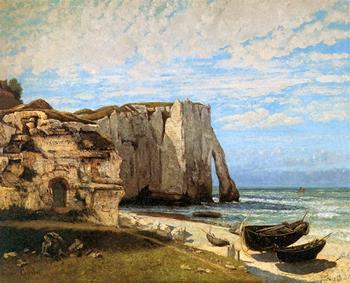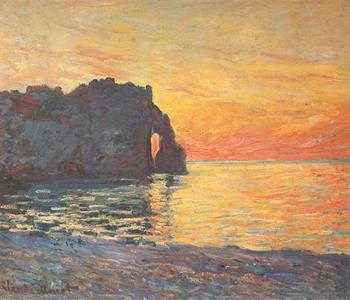A FRENCH CLIFF, 1979
WILLIAM DELAFIELD COOK
synthetic polymer paint on canvas
86.5 x 305.0 cm
signed and dated verso: W. Delafield Cook / London 1979
dated and inscribed with title on label attached verso: A French / Cliff / 1978 -9
Tolarno Galleries, Melbourne
The National Australia Bank Art Collection, acquired from the above in October 1980 (label attached verso)
William Delafield Cook: New Paintings, Redfern Gallery, London, 2 - 31 October 1979
William Delafield Cook: Mid - career survey, Art Gallery of New South Wales, Sydney, 4 June - 19 July 1987, cat. 14 (label attached verso)
William Delafield Cook, Selected Works 1958 - 1987, Australian Centre for Contemporary Art, Melbourne, 4 November - 6 December 1987, cat. 24
Perram, R., William Delafield Cook: Selected Works 1958 – 1987, Australian Centre for Contemporary Art, Melbourne, 1987, p. 17
Hart, D., William Delafield Cook, Craftsman House, Sydney, 1998, pl. 69, pp. 148, 149 (illus.), 152, 160, 191, 211, 233
Courbet - Cliffs at Etretat.jpg

‘By giving what is commonplace an exalted meaning, what is ordinary a mysterious aspect, what is familiar the impressiveness of the unfamiliar, to the finite the appearance of infinity...’1
The antithesis of the Impressionist who seeks to capture the transient, fleeting effects of light, and utterly unlike the Expressionist who filters observations through his or her own – usually tortured – subjectivity, William Delafield Cook aspires rather to an art that is timeless, objective and monumental. Paying homage to the past – from classical painting and architecture to Romantics such as Casper David Friedrich and Surrealists including de Chirico and Magritte – his works speak at once of quietude and magnitude, amplifying small, barely detectable sensations to the level of grand history painting. Thus transcending the descriptive to offer something more metaphysical and speculative, Cook’s compositions capture not so much instances of time, but time immemorial, exploring eternal problems and experiences that pervade all humanity.
In a manner akin to the previous lot which was inspired by Delafield Cook’s preoccupation with particular places and motifs employed by his artistic predecessors, so too A French Cliff, 1978 – 79 finds its origins in the annals of art history – and specifically, the oeuvre of Monet. Indeed, while still teaching at Maidstone Art School, Delafield Cook had presented a series of lectures that elaborated upon his interest in both this artist and the theme of ‘retracing the past’: ‘…I love the idea of doing it. I went to Rouen looking for the cathedral where Monet had worked. I did the same thing in London where I went to every spot I could find where he had painted around the Thames, Houses of Parliament, and Big Ben… You can actually stand in the same places where he stood. I went back over some weeks. I marked the spot on the ground so that I could put the tripod in exactly the same place. At different times of the day, I would take a photograph picking up on what Monet was trying to do – to reflect the shifting light and atmosphere. The trouble was that the air and light in London were so different from when Monet was doing it; so it wasn’t the same… It was partly about just wanting to see whether he was trying to be truthful to what was actually happening. Of course, I never found anything remotely resembling a Monet painting.’2
Claude-Monet-Etretat-Cliff-Of-dAval-Sunset-1885.jpg

While Delafield Cook’s ongoing references to the work of Monet may seem incongruous given his vastly different approach to painting, it was, rather, the Impressionist’s subjects that interested him, affording the catalyst or springboard from which he would pursue his own pictorial investigations. Earlier in the decade, he had experimented with the idea of adopting a particular motif in his Waterlilies, 1972 – 73 (Art Gallery of New South Wales, Sydney), and now in 1978, he visited a place that had been a great source of inspiration to Monet – the cliffs at Étretat in Normandy on the north coast of France.3 From Delacroix to Courbet, Monet and Matisse, generations of artists had been attracted to this location by ‘the beauty of its light and its famous chalk cliffs which the sea had worn away to form three arches and a solitary ‘needle’’.4 Incorporating the same distinctive curved arch of the rockface that punctuates the interpretations of Monet and Courbet, A French Cliff nevertheless departs markedly from any artistic precedents – not simply in its obvious technical differences, but more importantly perhaps, in the antipodean’s choice of emphasis. Where previous artists had explored the connections between the rocks and ocean, Delafield Cook here focuses instead upon a broader expanse of the cliff face extracted from its surroundings – concentrating on the undulating contours capped by patches of grass, the minute horizontal geological situations, and the striking, raking light and shadow.5 With its long narrow horizontal format accentuating the expansive nature of his depiction, the composition offers an intensely vivid evocation of surface and substance that transforms the seemingly familiar into the extraordinary – inviting the viewer to contemplate the visible until we are drawn intuitively to that which lies beyond the physical realm.
A technically demanding work executed over several months upon the artist’s return to his studio at Nettlecombe in Somerset, England, indeed A French Cliff encapsulates an impressive example of Delafield Cook’s deeply considered, scrupulously re-created painting where, as Ann Galbally suggests, ‘reality [is] twice-interpreted, twice filtered, twice heightened’ to generate a peculiar stillness, intensity and sense of isolation.6 As Delafield Cook himself reflected upon the agenda for his art in 1975: ‘…to isolate fragments of reality and to present them reduced to their essence, seeking an image which will endure and which will carry with it some of the strangeness and intensity which I myself have felt when experiencing them in nature. The subjects are not in themselves important and are selected simply as a means of conveying a view of the physical world that transcends the obvious, the particular and leads towards the metaphysical.’7
1. Quote from Novalis, Poeticism (1798) inscribed in one of Cook’s notebooks; see Hart, D., William Delafield Cook, Craftsman House, Sydney, 1998, p. 220
2. The artist cited in Hart, D., Hart, D., William Delafeld Cook, Craftsman House, Sydney, 1998, p. 148
3. Hart, ibid.
4. Spate, V., The Colour of Time: Claude Monet, Thames and Hudson, London, 1992, p. 157
5. Hart, op. cit.
6. Galbally, A., ‘William Delafield Cook’, Art International, Spring 1977, p. 33
7. The artist in a letter to Dr Bernd Krimmel, Darmstadt, Germany, 7 April 1975, reproduced in Hart, op. cit., p. 88
VERONICA ANGELATOS
